The fashion industry has been causing severe environmental consequences hundreds of times. thus, numerous fashion and vesture brands are moving towards sustainable fashion trends in order to cover the surroundings. And one of those criteria is to use environmentally friendly fabrics So how are those accouterments now and are there numerous? Let’s learn about 7eco-friendly fabrics with Printlonestar below.
What’s-friendly fabric?

Environmentally friendly fabrics are biodegradable fabrics and in the process of creating fabrics don’t release dangerous substances that contaminate the terrain.
Although there are numerous fabrics that are woven from natural accouterments, in the weaving process, people use other chemicals to produce continuity or help the fabric have good dyeing capability. aren’t duly treated before being discharged into the terrain, causing air and water pollution.
And fabrics that are woven from synthetic accouterments, after people do not use them presently, will come in large piles of non-biodegradable scrap. Slow or no corruption will beget the terrain to bear a large quantum of waste, creating adulterants for the atmosphere.
Besides, in order to grow shops to crop for primary processing to get filaments, and to serve the weaving process, numerous fungicides or growth agents have been used to help maintain and develop shops. These medicines have also been gradationally percolating into the soil and causing adverse goods that pollute the soil and latterly water coffers.
The heavy destruction that the fashion assiduity brings to the terrain in general and to fabrics, in particular, is decreasingly serious, it’s for this reason that people are now tending to switch to using fabrics. friendly and closer to the terrain. still, the volume of this fabric is still veritably small.
II. Eco-friendly fabrics
1. Lyocell fabric

Lyocell fabric is a fabric woven from the wood pulp cellulose element of woody shops. Unlike other fabrics, Lyocell has an unrestricted product process, so the release of waste into the terrain seems to be absent.
The woody shops used to make Lyocell fabric don’t need fungicides but can still grow. After making wood pulp, there will be a catalytic process with amino oxides, but this quantum will be used continuously through numerous times of fabric timber, so this quantum isn’t released into the terrain.
And of course, when Lyocell fabrics are made up of natural constituents, they will be largely biodegradable.
2. wool fabric

wool fabric is woven from the hairs of creatures. thus, these are extremely natural accouterments, without the use of chemicals or responses to produce fabric
In addition, hair fabric is veritably durable so people can use it for a long time. Limit the disposal of old woolen clothes into the terrain. hair fabrics are also largely biodegradable.
still, in order for hair to be truly a sustainable and friendly material, the process of getting the fur of the creatures must be veritably humane. But creatures must be free, happy, and not crowded or killed.
3. Linen fabric( linen fabric)

Linen fabric is a fabric woven from the body of flax, which is also a fully natural material and doesn’t contain dangerous chemicals involved in the weaving process. thus, linen is also one of the environmentally friendly fabrics
And to be honored as an organic fabric, in the production process to get the wood in the flax stem rather than incubating it in alkali or oxalic acid, the patron will soak the flax stalk in water. The job is to limit the dangerous substances contained in alkali and oxalic acid.
Unlike synthetic fabrics, linen is biodegradable, meaning its ingredients are likely to be absorbed into the terrain many times rather than centuries.
But in order for this fabric to be really near to the terrain, it’s imperative that the process of cultivating land and growing flax mustn’t beget marvels similar to soil corrosion, causing natural disasters. for mortal.
4. Hemp Fabric( Hemp Fabric)

Hemp fabric is woven from the stem of the hemp factory, the filaments are also considered close to the terrain because they’re also deduced from nature. In numerous studies by environmental experts, Hemp fabric when grown requires lower land than cotton, and its release of poisonous substances seems to be absent
Also, hemp is also known as carbon-negative raw material. They emit veritably little carbon, but on the contrary, absorb further. And on the other hand, there’s no need to use any fungicides or dressings to grow hemp. This is a great advantage when the hemp growing area doesn’t have to be exposed to dangerous chemicals.
And of course, Hemp fabric is also biodegradable, so the terrain doesn’t have to bear a large quantum of waste from the material.
5. Lotus silk fabric

Lotus silk fabric is a special fabric woven from the filaments of the lotus stem. The part that looks like it’ll be discarded. And this is also a fully natural fiber, so the material will clearly be suitable to putrefy in the terrain
In the process of separating filaments or weaving, no chemicals are used, so the filaments aren’t only environmentally friendly but also inoffensive to the skin. still, because lotus silk fabric is fully handwrought, it takes a lot of mortal trouble as well as limited accouterments. thus, this is a fabric that isn’t produced much, and the price is high, so people infrequently use it.
6. Organic Cotton Fabric
Unlike regular cotton yarn, organic cotton fiber is attained from cotton shops that are fully grown using non-GMO seeds. In addition, in the process of growing shops, don’t use diseases or fungicides to promote factory growth. This is a new advance in growing cotton to help the terrain limit the problems of soil or water pollution.
In the process of fabric products, all stages from harvesting, refining cotton filaments, weaving, and dyeing fabrics must misbehave with the set quality norms. And in the process of creating fabric filaments rather than using chemical substances, manufacturers will use organic styles to keep the filaments safe, especially suitable for nearly all skin types.

With organic cotton fabric, when using it, we will feel that this is a veritably soft material, always giving wear and tear comfort, and maximizes the advantages of cotton similar to high breathability or comfort. Good sweat immersion.
7. Coffee fabric
Is a fabric developed by Singtex Company- Taiwan? Taking advantage of the reused coffee grounds combined with a polymer to form a synthetic material, according to the Company’s exclusive formula, to produce Coffee fabric.
According to some statistics, every 3 mugs of coffee and 5 plastic bottles can produce one shirt. So through then, we can see that, although the material uses polymer factors, this is recovering. Helps to limit the waste of plastic bottles in the terrain, which takes a long time to putrefy.

The coffee fabric has a much lesser spongy capacity than cotton fabric. Not only that, but the fabric can also whitewash and repel UV shafts veritably well. With Singtex’s exclusive process, Coffee fabric reduces CO2 more when produced than other fabrics.
III. adding mindfulness of eco-friendly fabrics
The Earth is gradationally warming, and the pitfalls of natural disasters are adding. apprehensive that the terrain is being destroyed endlessly, numerous fashion brands as well as numerous fabric manufacturing companies have constantly developed and created more organic fabrics. There are a number of fabrics made from familiar shops similar as
Orange peel fabric
A fabric woven with yarn taken from orange peels. In 2014, the company Orange Fiber was innovated by two notorious contrivers in Italy, when they came up with the idea to turn the discarded corridor of oranges into fabrics with a face analogous to silk. The orange peel will be separated from cellulose and also spun into filaments. The company has won numerous awards as well as shared in the collections of large and small fashion brands.
Banana fiber fabric
It’s a fabric that’s taken from a discarded banana stem. In the process of growing banana trees, there’s no need to use diseases or any dangerous chemicals. When the banana tree is mature, the fruit is gathered, and the banana body will be kept for lychee product. Banana fiber fabrics are considered to be veritably durable fabrics because they’ve substantially natural factors similar to cellulose, hemicelluloses, and lignin. Banana fiber fabric is also veritably permeable and has high hygroscopicity.
Milk fabric
It sounds hard to believe, but with the advancement in weaving ways, currently, fabrics are also made from discarded milk remainders. Litchi is formed by Casein, which is a protein set up in cow’s milk. Milk fabric is durable, and has a soft and smooth texture like silk. It takes only 2 liters of water to produce 1 kg of fabric from milk. Meanwhile, it takes 000 liters of water to make 1 kg of cotton yarn.
Either, there are also some veritably eco-friendly fabrics that are uprooted from natural constituents similar to algae, nettle, and barkcloth. Although sustainable fabrics are veritably precious, people still want to lead a life with fresh air, a life that says no to pollution.



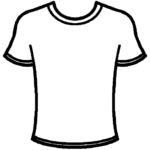 T-shirts
T-shirts
 Polo T-shirts
Polo T-shirts
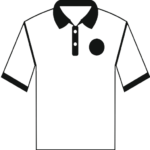 Embroidery
Embroidery
 Sweatshirts & Hoodies
Sweatshirts & Hoodies
 Women's clothing
Women's clothing
 Kid's clothing
Kid's clothing
 Hats
Hats
 Featured Brand
Featured Brand
 Bar & Restaurant
Bar & Restaurant
 Construction
Construction
 Conventions / Expos
Conventions / Expos
 Medical
Medical
 Nails / beauty salon ..
Nails / beauty salon ..
 Events & Celebrations
Events & Celebrations
 4th of July
4th of July
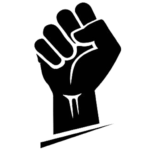 Black History Month
Black History Month
 Christmas
Christmas
 Fathers Day
Fathers Day
 Halloween
Halloween
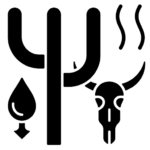 Animal Causes
Animal Causes
 Autism
Autism
 Cancer
Cancer
 Non-Profits
Non-Profits
 Walks / Runs / Marathons
Walks / Runs / Marathons
 Sports & Teams
Sports & Teams
 Baseball
Baseball
 Basketball
Basketball
 Badminton
Badminton
 Bowling
Bowling
 Hockey
Hockey
 College
College
 Clubs / Organizations
Clubs / Organizations
 College Sports
College Sports
 Departments
Departments
 Greek Life
Greek Life
 Homecoming
Homecoming
 Real Life Heroes
Real Life Heroes
 Air Force
Air Force
 Army
Army
 Coast Guard
Coast Guard
 Medical Staff
Medical Staff
 Fire Department
Fire Department
 K-12 Schools
K-12 Schools
 Chorus and Choir
Chorus and Choir
 Class Of
Class Of
 Dances & Prom
Dances & Prom
 Drama
Drama
 Clubs
Clubs
 Bible School
Bible School
 Church Youth Groups
Church Youth Groups
 Mission Trips
Mission Trips
 Meditation
Meditation






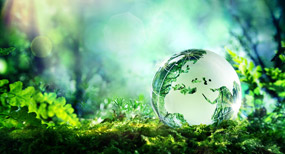



























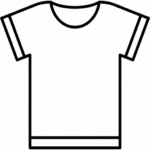 Short Sleeve T-shirts
Short Sleeve T-shirts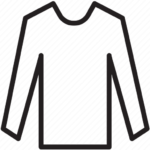 Long Sleeve T-shirts
Long Sleeve T-shirts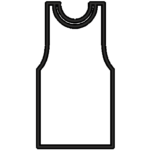 Tank Top & Sleeveless
Tank Top & Sleeveless Tie-Dye T-shirts
Tie-Dye T-shirts Soft Tri-Blend T-shirts
Soft Tri-Blend T-shirts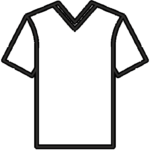 V-Neck T-shirts
V-Neck T-shirts Pocket T-shirts
Pocket T-shirts Made in USA
Made in USA Sweatshirts Hoodies
Sweatshirts Hoodies Hoddies
Hoddies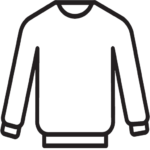 Crew Neck Sweatshirts
Crew Neck Sweatshirts Full Zip Sweatshirts
Full Zip Sweatshirts Quarter Zip Up Pullover
Quarter Zip Up Pullover Heavyweight Sweatshirts
Heavyweight Sweatshirts Fleece Jackets & Pullovers
Fleece Jackets & Pullovers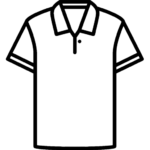 Polo T-shirts
Polo T-shirts Performance Polo Shirts
Performance Polo Shirts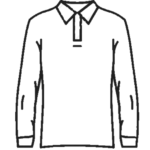 Long Sleeve Polo Shirts
Long Sleeve Polo Shirts Golf Polo Shirts
Golf Polo Shirts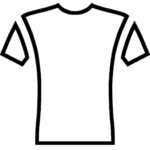 Short Sleeve Performance Shirts
Short Sleeve Performance Shirts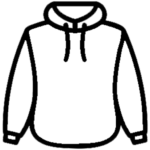 Performance Sweatshirts & Hoddies
Performance Sweatshirts & Hoddies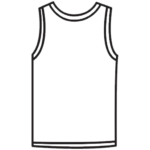 Performance Tanks
Performance Tanks Quarter Zip Performance Shirts
Quarter Zip Performance Shirts Rash Guards Swim Shirts
Rash Guards Swim Shirts Performance Sweatpants & Joggers
Performance Sweatpants & Joggers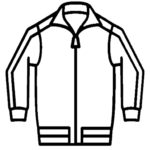 Track Jackets
Track Jackets Shorts
Shorts Nike
Nike Adidas
Adidas Outerwear
Outerwear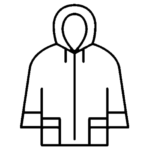 Rain Javkets
Rain Javkets Insulated & Down Jackets
Insulated & Down Jackets The North Face Jackets
The North Face Jackets Work Jackets
Work Jackets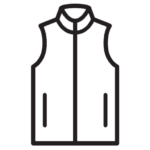 Vests
Vests Gyms & Fitness
Gyms & Fitness Landscaping
Landscaping Pets store
Pets store Band & Orchestra
Band & Orchestra Club
Club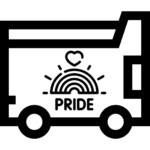 School Pride
School Pride Hanukkah
Hanukkah Mardi Gras
Mardi Gras Mothers Day
Mothers Day New Years
New Years Patriotic
Patriotic St. Patrick’s Day
St. Patrick’s Day Thanksgiving
Thanksgiving Valentines Day
Valentines Day Cheerleading
Cheerleading eSports
eSports Football
Football Golf
Golf Lacrosse
Lacrosse MMA & Boxing
MMA & Boxing Mud Runs
Mud Runs Hockey
Hockey Pickleball
Pickleball Poker
Poker Soccer
Soccer Swimming
Swimming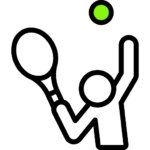 Tennis
Tennis Track & Field
Track & Field Volleyball
Volleyball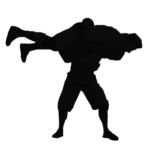 Wrestling
Wrestling